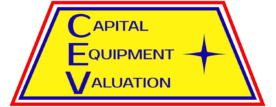What Are the Approaches to Value Used By Equipment Certified Appraisers?
There are three generally recognized approaches used by Equipment Certified Appraisers to the determination of equipment value: cost, sales comparison, and income. These approaches are widely accepted by financial institutions, courts, government agencies, business, and society in general, and they establish theoretical and systematic methods. These three approaches are briefly described here.
- Cost approach: The appraiser starts with the current replacement cost new (or in some circumstances the reproduction cost new) of the property being appraised, and then deducts for the loss of value caused by physical deterioration, functional obsolescence, and economic obsolescence. The logic behind the cost approach is the principle of substitution: a prudent buyer will not pay more for a property than the cost of acquiring a substitute property of equivalent utility.
- Sales comparison approach: The appraiser adjusts the prices that have been paid for assets comparable to the asset being appraised, equating the comparables to the subject.
- Income approach: The appraiser determines the present value of the future economic benefits of owning the property.
Although USPAP requires that each of the three approaches to value be considered, when determining which approach is necessary for credible assignment results, the valuation of certain assets or the valuation definition under consideration may make the development and use of all three approaches impractical.
The cost approach without sufficient research and quantification of depreciation and obsolescence may not accurately reflect the value of a particular asset. It may not be possible to use the income approach to determine the in-use value of the equipment because it may be impossible to isolate the income attributable to the equipment. The sales comparison approach would be impossible to use for a one-of-a-kind machine that has never been exposed to or sold in the marketplace. There are many other examples. The valuation circumstances involving a particular asset may not allow the application and correlation of all three approaches to value. This is consistent with Standards Rule 7-4 of USPAP, which requires the appraiser to consider all three approaches to value and decide which approaches are applicable to the situation at hand.
